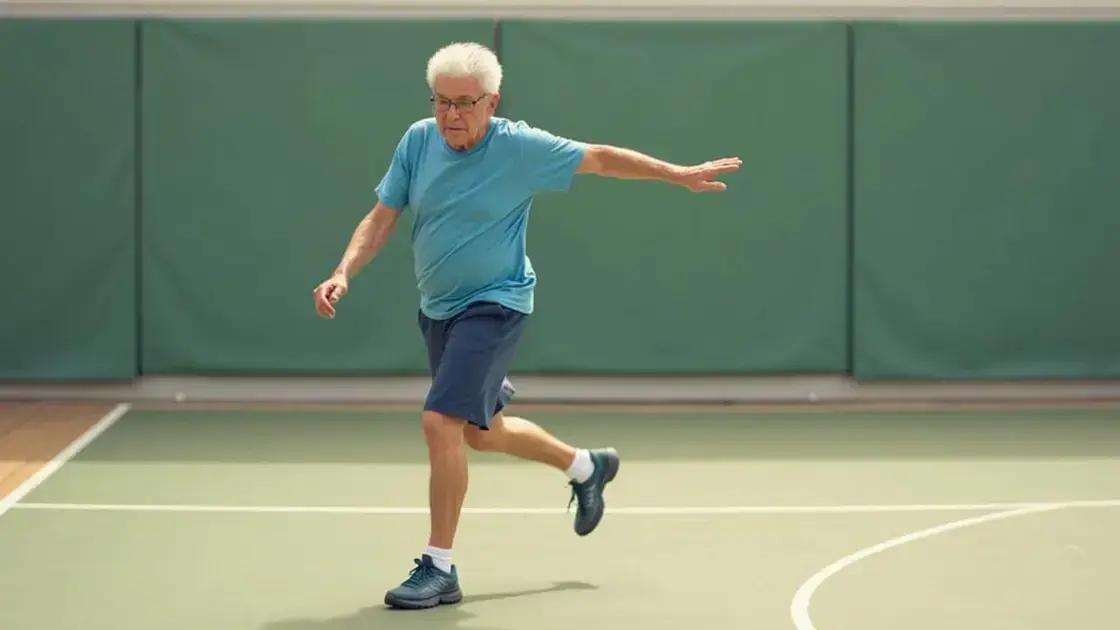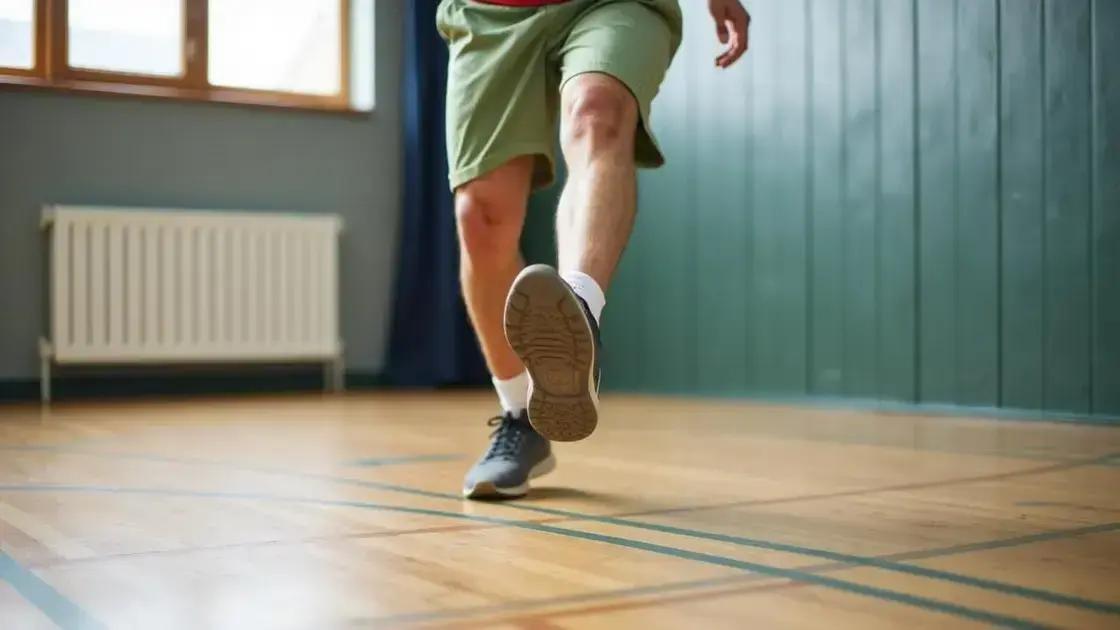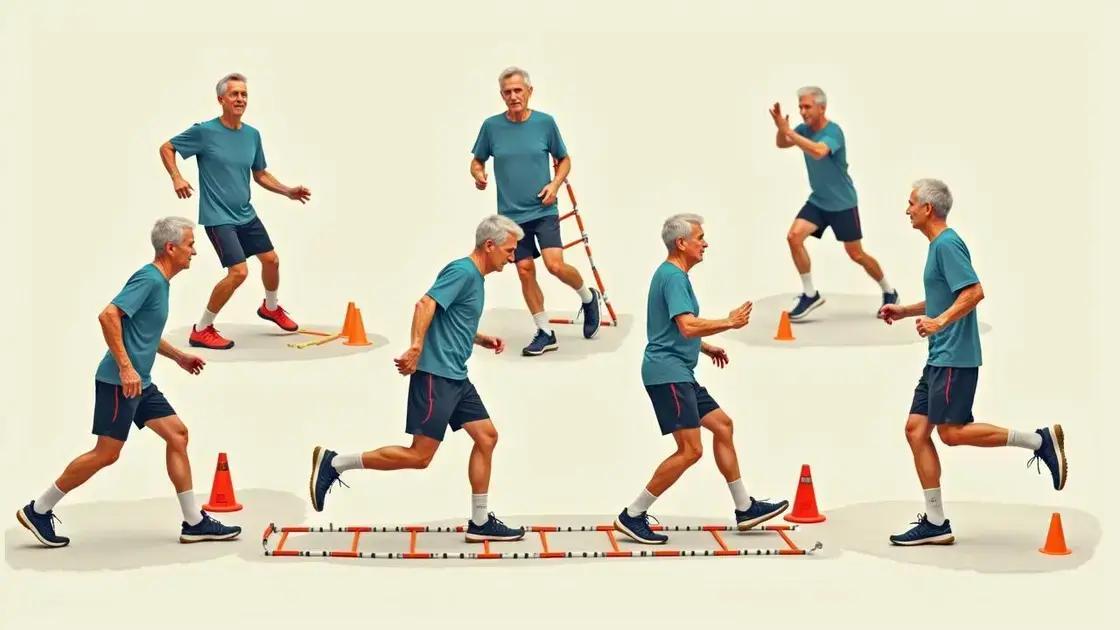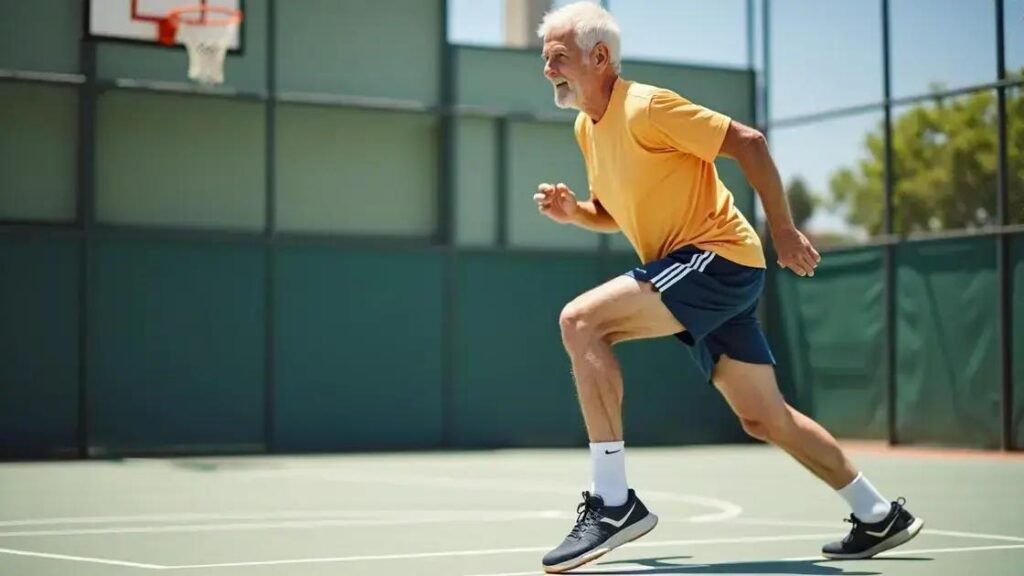Improving quick footwork after 50 is essential for maintaining agility and balance. Effective drills include ladder exercises, cone sprints, and box drills, complemented by strength training and flexibility routines. Regular practice helps enhance coordination and confidence, fostering a more active and healthier lifestyle.
Improving quick footwork after 50 is essential for maintaining agility and overall fitness. As we age, our body requires specific exercises to enhance coordination and stability. By incorporating targeted drills into your routine, you can significantly boost your footwork skills, which is crucial whether you’re playing sports or simply staying active. In this article, we’ll delve into understanding the importance of quick footwork and share the best drills tailored for adults over 50.
Understanding Quick Footwork

Understanding quick footwork is crucial for anyone looking to enhance their agility, especially after the age of 50. Quick footwork refers to the ability to move your feet swiftly and accurately, enabling you to react to different physical activities, whether it’s a quick pivot in a game or maintaining balance while walking.
The Importance of Agility
Agility diminishes as we age, making it important to work on improving footwork. Quick footwork allows for faster movements, helps prevent falls, and enhances performance in sports. Practicing these skills can lead to a more active lifestyle.
Key Elements of Quick Footwork
Quick footwork involves several key elements. Foot speed is the primary focus; the faster you can move your feet, the quicker your entire body can respond. Foot placement is equally important, as proper positioning helps maintain balance and control.
Muscle Memory and Coordination
Developing muscle memory through repetitive drill practices can significantly benefit your footwork. Good coordination enhances your ability to adjust and move effectively in various situations. The more you practice, the more your body will adapt to quick movements.
Staying Mindful of Your Body
As we age, it’s essential to stay mindful of our bodies while practicing quick footwork. Always consider the impact on joints and be aware of your limits. Avoid overexertion by gradually increasing intensity during footwork drills.
Key Benefits of Footwork Drills

Footwork drills offer numerous benefits, especially for those over 50. These exercises are specifically designed to improve agility, balance, and coordination. Regular practice can lead to noticeable enhancements in daily activities and sports.
Improved Agility
One of the primary benefits of footwork drills is improved agility. As you practice quick movements, your body becomes more responsive. This increased agility helps you navigate physical challenges more efficiently.
Enhanced Balance
Footwork drills also improve balance, which is vital as we age. Better balance reduces the risk of falls and injuries. By honing your foot placement and weight distribution, you can maintain stability during various activities.
Increased Coordination
Working on footwork enhances your overall coordination. This skill is essential not just in sports but in everyday tasks. Improved coordination leads to smoother, more fluid movements, making activities easier and safer.
Boosted Confidence
As your footwork and overall agility improve, you’ll likely feel more confident in your physical abilities. This boost in confidence encourages you to stay active, participate in sports, and enjoy social activities, thus enhancing your quality of life.
Top Drills for Quick Footwork

Incorporating footwork drills into your routine can greatly enhance your speed and agility. Here are some effective drills to help you improve your quick footwork, especially tailored for individuals over 50.
1. Ladder Drills
Using an agility ladder, perform various foot patterns such as high knees and lateral shuffles. These drills stimulate coordination and speed. Start slow, focusing on foot placement, and gradually increase your speed as you progress.
2. Cone Sprints
Set up cones in a straight line or a zigzag formation. Sprint to each cone, focusing on quick and light foot movements. This drill helps with acceleration and enhances your ability to change direction swiftly.
3. Box Drill
Create a square with four cones. Move quickly from one cone to another in a specific sequence (e.g., front to back, side to side). This drill improves your agility by developing awareness and control while changing directions.
4. Shadowing
Pair up with a partner and imitate their movements without direction. This drill encourages quick reactions and footwork synchronization. It improves both your responsiveness and footspeed.
Tips for Maintaining Agility After 50

Maintaining agility after 50 is essential for active living. Here are some effective tips to help you stay agile, ensuring your movements remain quick and controlled.
1. Regular Stretching
Incorporate stretching into your daily routine. Stretching enhances flexibility, which is vital for maintaining agility. Focus on major muscle groups like legs, back, and arms to improve overall mobility.
2. Strength Training
Engage in strength training exercises, focusing on the core, legs, and upper body. Strong muscles support your joints and enhance balance, contributing to better agility.
3. Stay Active with Low-Impact Exercises
Activities such as swimming, cycling, or yoga are excellent for maintaining agility without putting too much pressure on your joints. These exercises promote cardiovascular fitness while keeping your body agile.
4. Practice Balance Exercises
Incorporate balance exercises like single-leg stances or using a balance board. Improving your balance is crucial for agility, helping you respond quickly to changing motions.
5. Listen to Your Body
Pay attention to your body’s signals. Rest when needed and avoid overexertion. Allowing time for recovery helps prevent injury and keeps you agile in the long run.
The Path to Enhanced Agility After 50
Improving quick footwork and maintaining agility after 50 is not only possible but essential for an active lifestyle. By incorporating targeted footwork drills and embracing strategies for overall fitness, you can enhance your agility, boost confidence, and reduce the risk of injuries.
Regular practice of the recommended drills, combined with strength training, stretching, and balance exercises, will set you on a path to improved physical capabilities. Remember to listen to your body and stay consistent in your efforts.
With dedication and the right approach, you can enjoy the benefits of quick footwork and maintain your agility for years to come.
FAQ – Frequently Asked Questions about Improving Quick Footwork After 50
Why is quick footwork important as I age?
Quick footwork aids in maintaining balance and agility, reducing the risk of falls and allowing for more active participation in sports and daily activities.
What types of drills can help improve my footwork?
Ladder drills, cone sprints, box drills, and shadowing exercises are excellent for enhancing quick footwork and improving overall agility.
How often should I practice footwork drills?
Aim to practice footwork drills at least 2-3 times a week, mixing in different exercises to keep it engaging and effective.
Can I still improve my agility after 50?
Absolutely! With consistent practice and the right exercises, you can significantly enhance your agility and quick footwork at any age.
What other exercises can complement footwork drills?
Incorporating strength training, flexibility exercises, and balance workouts can greatly enhance your overall agility and athletic performance.
Should I consult a professional before starting a new exercise routine?
Yes, consulting with a healthcare provider or a fitness professional is a good idea, especially if you have existing health concerns or are new to exercise.













